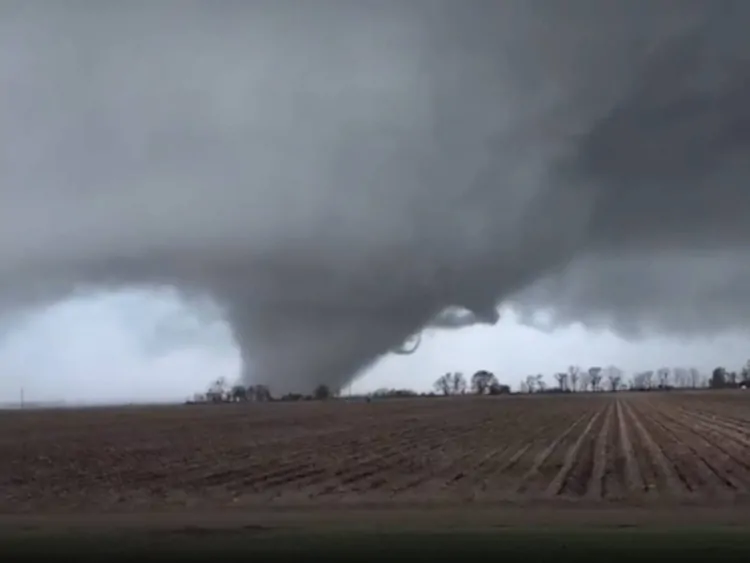Deadly Tornadoes and Floods in the U.S. Kill 18 – The Harsh Reality of Climate Change
Powerful tornadoes and floods hit the U.S., killing 18 people. Major destruction and evacuations have been reported in Texas, Oklahoma, and nearby states.

In early April 2025, the United States once again faced the wrath of nature. Tornadoes and flash floods devastated large parts of Texas, Oklahoma, Arkansas, and Kentucky, resulting in the tragic loss of 18 lives and leaving hundreds injured. Thousands of homes, schools, roads, and businesses have been destroyed in what experts are calling one of the most intense weather events in recent memory.
The deadly system, which lasted from April 2 to April 6, brought with it winds reaching speeds of over 150 mph, torrential rain, and widespread chaos. Emergency services across affected states declared a disaster zone, urging residents to evacuate or stay sheltered.
Texas and Oklahoma: Epicenters of Destruction
Texas and Oklahoma suffered the worst damage. In Oklahoma City suburbs, entire neighborhoods were flattened by tornadoes. At least 7 people were killed in the area, with many more trapped under debris for hours before being rescued. Tornado paths shifted unpredictably, making rescue operations even more dangerous.
In Texas, massive flooding swept through Houston and surrounding towns. Rivers burst their banks, farmlands were submerged, and entire communities were forced to evacuate. In some areas, water levels reached as high as 5 feet, flooding homes and cutting off power and clean water supplies.
The Role of Climate Change
Scientists and meteorologists are drawing a clear line between these extreme weather events and the growing effects of climate change. According to the National Oceanic and Atmospheric Administration (NOAA), early 2025 recorded some of the warmest temperatures on record, leading to more moisture and instability in the atmosphere.
Dr. Maria Stephens, a climate scientist, commented:
"This isn't just another storm season. This is the new climate reality. We are seeing more frequent and more violent natural disasters – and they are hitting harder than ever before."
Federal Response and Rescue Efforts
The federal government declared a state of emergency, deploying FEMA teams and the National Guard to assist in rescue and relief operations. Temporary shelters were set up in schools and churches, while food and medical supplies were flown in from nearby states.
President Donald Trump addressed the nation, promising immediate federal support and long-term recovery plans. However, criticism emerged on social media regarding delays in aid to rural areas. Many communities, especially in remote counties, say they are still waiting for assistance days after the storm passed.
Social Media and Community Support
Online platforms have played a major role in both spreading awareness and organizing relief. The hashtags #TexasStorm and #PrayForOklahoma trended globally, with thousands sharing images, survivor stories, and calls for donations.
Celebrities and influencers, including Taylor Swift and LeBron James, pledged support and encouraged their followers to donate. Nonprofits like the Red Cross, Feeding America, and local food banks launched emergency campaigns that raised millions in just a few days.
What’s Next? A Future of Uncertainty
Experts warn that unless immediate action is taken to address climate change, such disasters will only become more frequent and more deadly. Building more resilient infrastructure, investing in early warning systems, and reducing carbon emissions are no longer optional – they are essential.
This event serves as a grim reminder that the climate crisis is not a distant threat. It is here, and it's impacting lives today.










